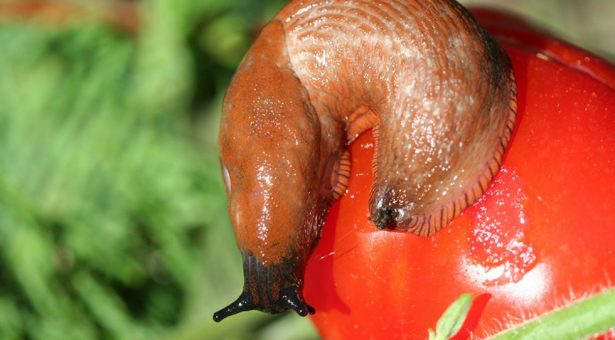All about slugs

Slugs, like every living organism in an ecosystem have a role.
As well as providing a crucial food source for other wildlife, many species are key composters, helping to breakdown decomposing vegetation.
There are approximately 40 species of slug currently found in the UK, with only a small number of these considered as pest species. However, it has been estimated that these species cause approximately £8 million in damage to agricultural crops each year.
Evolutionary history
All terrestrial slugs have evolved directly from terrestrial snails; with the most obvious evolutionary shift being the loss of their large external protective shells; however modern slug species do still have a vestigial shell, a remnant left over from their evolutionary past. This shell is still found externally in a small number of UK species, however in the majority it is now located internally.
It is commonly believed that separate isolated evolutionary events have produced the different slug families we see represented today.
Anatomy and behaviour
Slugs move in rhythmic waves by contracting muscles on the underside of the foot. At the same time a layer of (pedal) mucus is produced that helps to smooth the slugs path across the ground. This mucus is also used as the slugs navigation system, as slugs will find their way back to their tunnels and feeding sites by following their mucus trail.
A slug has two retractable pairs of tentacles. The upper pair of tentacles are called the optical tentacles and are the eyes of a slug. The optical tentacles have light sensitive eyespots on the end and can be re-grown if lost. These are also used for smell. The lower pair are two smaller tentacles and are used for feeling and tasting.
The mouth parts are below the tentacles and the slugs eat using a radula which is a tongue-like organ that is covered with approximately 27,000 tiny tooth-like protrusions that are called denticles.
Slugs have a large respiratory pore called the pneumostome. This leads to a single lung and is generally found on the right hand side.
The mantle is an area behind the head of the slug and is made of thicker flesh than the head. If a slug is frightened or not active the slug will retract its head into the mantle for protection. The mantle also forms the respiratory cavity. In some slug species there is a small piece of shell in the mantle, this is because slugs have evolved from snails.
The keel is a ridge that runs the length of the back of some species of slug.
Habitat and lifecycle
Cool weather, rain and fog is the best weather for slugs because since they don’t have an outer shell to protect them, they may dry out in dry and warm weather.
When the weather is warm and dry slugs will try and find a cool, dark and damp area to hide in. However if there is a long dry spell then slugs will encase themselves in a papery cocoon-like structure and attach themselves to a wall or a tree and wait it out.
Diet
The majority of UK slug species are considered generalist herbivorous feeders and will commonly eat such things as:
- Leaves
- Flowers
- Fruits
- Mushrooms
- Lichens
- Decaying plant material
As well as these herbivorous slugs, the UK is also home to a number of omnivorous and carnivorous species, some of which eat carrion and some of which actively hunt other slugs and snails.
For more detailed information about a certain species’ diet see the Identification guide.
Predators
Slugs have a variety of predators such as:
- Hedgehogs
- Birds (e.g. Thrushes)
- Toads
- Ground Beetles
When a slug is attacked by a predator it will contract its body to make it a smaller target. The mucus that covers a slug’s body doesn’t taste very nice and is slippery, so this is why you will often see birds wiping slugs on the grass before they eat them.
